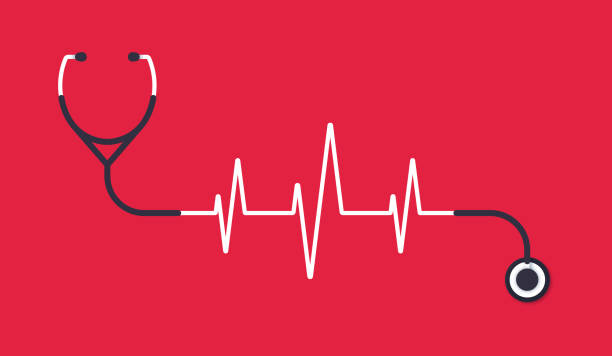Heart failure is a condition where the heart struggles to pump blood effectively, causing symptoms like fatigue, breathlessness, and swelling. Early detection is critical for effective management, and one of the simplest tools for initial diagnosis is the stethoscope.
In this article, we’ll explore how a stethoscope is used to detect heart failure, along with detailed information on advanced diagnostic tests, the stages of heart failure, and what to do after a diagnosis.
How a Stethoscope Helps in Diagnosing Heart Failure
The stethoscope is often the first tool a doctor uses during a physical examination. By listening to your chest, doctors can detect:
- Abnormal Heart Sounds: Murmurs or irregular beats may indicate structural problems in the heart, such as valve disorders or arrhythmias.
- Lung Sounds: Crackling sounds suggest fluid buildup in the lungs, a common sign of heart failure.
- Heartbeat Patterns: A rapid or weak heartbeat can hint at the heart struggling to pump blood.
Although a stethoscope alone cannot confirm heart failure, it helps doctors identify early warning signs and decide if further tests are needed.
Diagnostic Tests for Heart Failure: A Detailed Look
Once initial signs point to heart failure, a variety of tests confirm the diagnosis. Let’s explore these in detail:

1. Electrocardiogram (ECG)
- What it does: Measures the electrical activity of your heart.
- Purpose: Detects irregular rhythms (arrhythmias) and heart muscle damage.
- When used: As a preliminary test, often after abnormal sounds are detected with a stethoscope.
- Limitations: An ECG can’t measure how well the heart pumps blood.
2. Echocardiogram
- What it does: Uses sound waves to create images of the heart.
- Purpose: Provides detailed visuals of the heart’s size, structure, and pumping ability.
- Why it matters: Helps determine the severity of heart failure and its root cause.
3. Blood Tests: The Role of BNP
- BNP Test: Measures levels of B-type natriuretic peptide, a hormone released when the heart is under stress.
- Why it’s critical: Higher BNP levels strongly indicate heart failure.
- Additional markers: Tests may also measure kidney function, electrolytes, and thyroid levels to rule out other causes.
4. Chest X-ray
- What it shows: Images of the heart and lungs.
- Purpose: Identifies fluid buildup in the lungs, enlarged heart size, or other abnormalities.
- Best for: Confirming physical signs of heart failure seen during a stethoscope exam.
5. Stress Test
- How it works: Evaluates heart function under physical exertion or simulated stress.
- Purpose: Identifies how well your heart copes with increased demand.
- Common methods: Treadmill walking or medication to stimulate heart activity.
6. Cardiac MRI
- What it does: Creates highly detailed images of the heart using magnetic fields.
- Why it’s used: Offers precise measurements of heart structure and function, particularly in complex cases.
Can an ECG Detect Heart Failure?
An ECG plays a vital role in the early detection of heart failure. It can show:
- Irregular heart rhythms.
- Past heart attacks may have weakened the heart muscle.
- Signs of thickened heart walls (hypertrophy).
While an ECG can indicate potential heart failure, it is usually combined with imaging tests like an echocardiogram for a more accurate diagnosis.
What Are the 4 Stages of Congestive Heart Failure?
Heart failure progresses through four stages, each requiring specific interventions:
Stage A: High Risk but No Symptoms
- Risk factors: Hypertension, diabetes, or family history of heart disease.
- Management: Lifestyle changes and medications to prevent progression.
Stage B: Heart Changes but No Symptoms
- What happens: Structural changes in the heart are detected.
- Example: Left ventricular hypertrophy (enlarged heart chamber).
- Treatment: Medications like beta-blockers or ACE inhibitors.
Stage C: Symptoms Appear
- Symptoms: Breathlessness, fatigue, swelling in the legs or abdomen.
- Management: Includes medications, diet changes, and exercise plans.
Stage D: Advanced Heart Failure
- Symptoms: Severe and persistent despite treatment.
- Treatment: This may require devices like pacemakers or heart transplants.
Blood Tests for Heart Failure: Why BNP Matters
The BNP test is a cornerstone in diagnosing and managing heart failure. BNP levels rise when your heart is under stress and can help:
- Confirm the presence of heart failure.
- Differentiate between heart failure and other conditions, like lung disease.
- Monitor treatment effectiveness.
How BNP Levels Are Interpreted:
| BNP Level (pg/mL) | Indication |
| Less than 100 | Heart failure is unlikely. |
| 100–400 | Possible heart failure, further tests needed. |
| Above 400 | Strongly suggests heart failure. |
Diagnosed with Heart Failure: Now What?
A heart failure diagnosis may feel overwhelming, but proactive steps can help you lead a fulfilling life. Here’s what to do:
1. Follow Your Treatment Plan
- Take prescribed medications like diuretics, ACE inhibitors, or beta-blockers.
- Attend regular checkups to monitor your heart’s condition.
2. Adopt a Heart-Healthy Lifestyle
- Diet: Reduce salt, sugar, and saturated fats.
- Exercise: Engage in light physical activity, as advised by your doctor.
- Weight management: Maintain a healthy weight to reduce strain on your heart.
3. Know the Warning Signs
- Report worsening symptoms like increased swelling, shortness of breath, or chest pain immediately.

4. Emotional Support
- Join support groups or talk to a counselor to manage the emotional challenges of living with heart failure.
Can a Stethoscope Detect Heart Problems?
While a stethoscope provides vital initial insights, it’s not definitive. It can detect:
- Heart murmurs: Indicating valve issues.
- Irregular rhythms: Suggesting arrhythmias.
- Fluid in lungs: A sign of congestive heart failure.
These findings guide doctors toward more advanced tests for a precise diagnosis.
Final Thoughts: Diagnosing Heart Failure with a Stethoscope
A stethoscope is an essential tool in diagnosing heart failure, offering valuable early clues. Combined with advanced tests like ECGs, BNP blood tests, and imaging, it provides a clear picture of your heart’s health. If you suspect heart problems, don’t delay—consult your doctor and get tested. Early detection can save lives.


